A Crisp-y Taste of The Big Apple
The eccentric and unapologetic dandy Quentin Crisp moved to NYC when they were 72. And then they partied harder than ever.
In 1981, at the age of 72, English-born writer, actor, and queer icon Quentin Crisp moved to New York City permanently, taking up a small apartment at 46 East 3rd Street in Manhattan's East Village. The late-in-life move came as a surprise to many—though Crisp reportedly at one point stated: “I have always been American in my heart…the moment I saw New York, I wanted it.” The craving for Crisp’s move to the City likely began, however, circa 1978, when the already accomplished celebutante decided to take their one-man show, which had sold out London's Duke of York's Theatre, to The Big Apple.
Upon arriving in NYC, Crisp first landed at the infamous Hotel Chelsea, where their brief stay coincided with a fire, a robbery, and the mysterious death of Nancy Spungen, the American girlfriend of English musician Sid Vicious. Crisp thus left the hotel, and shortly thereafter moved into what would become their permanent residence on 3rd Street. That apartment was essentially one tiny rented room in what was then a fairly shabby, grungy neighborhood. Perhaps, the aesthetic of the neighborhood was actually fitting—as Crisp themself liked to boast that they never cleaned their place, at one point disclosing: “After four years, the dirt doesn’t get any worse.” Crisp would remain in their East Village slum until their death at the age of 90 on November 21st, 1999. But between 1981 and 1999, Crisp’s 18 years as a New York City resident can read like an absolute fever dream.
But let’s begin with a quick recap of Quentin Crisp’s first 72 years on Earth. Crisp was born Denis Charles Pratt in Sutton, Surrey, on December 25th, 1908. In their early twenties, they left home and changed their name, in part due to the gay-bashing assaults they would often face due to their feminine appearance and mannerisms. After briefly studying journalism, they enrolled in art classes and concurrently began exploring their sexuality by meeting with other gay men and hiring rent boys. They also delved into gender expression, experimenting with makeup and women’s clothing, and they would soon become known for their outré appearance, which often included bright make-up, long and dyed crimson locks, painted fingernails, and open-toed sandals which proudly showed off colorful toenails.
After briefly working as a rent boy themself, Crisp eventually became a model for life drawing classes, but also started writing what became The Naked Civil Servant, an autobiography that was published in 1968 to generally good reviews. The book saw modest sales, but generated considerable intrigue about Crisp's broader persona. Crisp was then approached by documentary filmmaker Denis Mitchell to be the subject of a 1968 short film in which they would discuss their eccentric lifestyle. The documentary aired on British TV in 1971, and four years later The Naked Civil Servant was made into a television broadcast starring John Hurt, which aired in both the U.K. and the U.S. It was a major success, and turned both Hurt and Crisp into celebrities. Following the unexpected surge of public interest, Crisp transitioned into a performance career and they began touring the country with a one-man show they crafted called An Evening With Quentin Crisp, which drew inspiration from their groundbreaking memoir. The Naked Civil Servant, meanwhile, was also issued for reprint, further boosting Crisp’s celebrity. The success of Crisp’s one-man show in Britain encouraged Crisp to embark on a New York performance journey and bring their celebrated theatrical performance to American audiences.
Once they had settled into Manhattan, Crisp continued to perform their one-man show, but thereafter basically adopted the attitude of saying yes to anything and everything—famously stating along the way: "I go where my fare is paid…that is the story of my life." Elsewhere, Crisp remarked “that provided one could exist on peanuts and champagne, one could quite easily live by going to every cocktail party, premiere and first night to which one was invited.” And despite being a quasi-celebrity, Crisp famously allowed their phone number to be listed in the telephone directory, claiming that it was their duty to converse with anyone who called them. At one point, they even told David Letterman on national TV: "If you don't have your name in the phone book, you're stuck with your friends. How will you ever enlarge your horizons?” Crisp’s openness thus extended to socializing with and accepting invitations from almost anyone. It therefore comes as no surprise that during Crisp’s New York City years, they seemed to pop up anywhere and everywhere. In fact, Crisp would often exclaim that in New York City, ‘if you simply stood still long enough, someone would inevitably want to photograph or interview you’ (at least true in their sake).
Despite being a septuagenarian going on octogenarian, Quentin Crisp was both seen and photographed throughout the 1980s and ‘90s regularly galavanting at many notable nightclubs in New York City. In one photo, they are flanked by a trio donning Carmen Miranda drag at the gay club Private Eyes, which operated at 12 West 21st Street from 1984 to 1991. In another, they are seated in front of a transgender trapeze artist at the circus-themed nightclub GG's Barnum Room, which was open between 1978 and 1980 at 128 West 45th Street. Elsewhere, Crisp is surrounded by Club Kid and nightlife columnist Michael Musto and friends partying at Musto’s birthday party in February of 1993 at the legendary Club USA (218 West 47th Street, 1992-1995).
Speaking of legendary, Crisp also at some point made it out to Studio 54, where they were photographed in their signature ascot and perfectly wispy coiffure. Another snapshot shows them out at a different nightclub surrounded by nightlife superstars Susanne Bartsch, Brandy Wine and RuPaul. Then there’s the curious shot taken by Morgan Gwenwald of Crisp involved in deep conversation with the butch lesbian and transgender activist Leslie Feinberg, taken at the brief but noteworthy drag/trans bar Club 58 (40 East 58th Street, 1994-1995). Meanwhile, nightlife photographer and chronicler John Simone has tons of shots of Crisp from all over town, hanging out with the likes of Lypsinka (John Epperson), Tama Janowitz, and Sylvia Miles at hip places like Stringfellow’s, Kaffe Haus, and the Tunnel.
On some nights, Crisp was even the venue’s main attraction. One club flyer from 1998, for example, features Crisp’s visage and promotes a gay dance party at Club LIFE (158 Bleecker Street, 1997-1999) called “Merry Quentin Crisp-mas!” celebrating both the annual holiday as well as Crisp’s forthcoming birthday (it was actually their 90th and would sadly be their last.) Needless to say, despite their age, Quentin Crisp clearly WENT OUT, and at one point was even quoted as having said: “Of course, the most significant thing I’ve done in my life was coming to New York…When I got here and found that in America everyone is your friend and that living in New York is one big street party, I was so pleased, I could have wept for joy.”
Not to be mistaken for a perpetual party-animal who had to nurse a hangover each morning, Crisp somehow managed to be incredibly prolific in the daytime as well. While in New York, they continued to perform in a variety of other shows, films, and TV series generating a list of wildly varying credits that include playing Queen Elizabeth I in the gender-bending film Orlando (1992), playing a pageant judge in 1995's drag comedy To Wong Foo, Thanks for Everything! Julie Newmar, and playing a character named Dr. Zalhus in the 1985 film The Bride, where they co-starred with English rocker and former Police-frontman, Sting. Sting was so taken with Crisp that he in fact wrote a hit song about them entitled “Englishman in New York,” which was released in October 1987. Crisp subsequently starred in the song’s music video as well, included below.
Naturally, Crisp was involved in all sorts of other zany roles and odd-jobs as well. Their voice and image were used in the advertising campaign for Calvin Klein’s groundbreaking gender-neutral perfume CK-One, for example, while drag duo Brandywine and Brenda A-Go-Go sold bottles of something called Fanci-full Rinse with Quentin Crisp’s autograph at their Howdy-Do shop in the East Village. Crisp also never stopped writing, publishing books like How to Become a Virgin (1981), Doing It With Style (1981) and How to Go to the Movies (1988). In writing for Wussy Magazine about Crisp, author Andrew Alexander perhaps put it best: “I struggle a bit to convey who exactly Quentin Crisp was. Performer? Author? Actor? Wit? Icon? Celebrity? Artist? Guru? Philosopher? All fit; all fall short.”
Though they were primarily beloved, in their final years Crisp became a somewhat controversial figure known for their acerbic soundbites. They occasionally shocked folks with what were meant to be be jocular quips, saying things like that AIDS was "a fad" or that homosexuality was "a terrible disease." Naturally, these were meant not meant to be taken seriously. Then at the age of 90, Crisp shocked the world yet again when they declared in their final book The Last Word that they had come to the conclusion that they were transgender. Shortly thereafter, however, Crisp suffered a heart attack and passed away. They died while staying at the home of a friend in Manchester, on an evening when it had just been announced they would be reviving their infamous one-man show. Given Crisp’s love for New York, their ashes were flown back to the City and were subsequently scattered across their beloved Manhattan.
After their death, Crisp’s great-nephew Adrian Goycoolea explained in an interview with Jeremiah Moss: “The East Village was where Quentin spent the happiest years of [their] life. It was here that [they] felt truly accepted by the world at large. [They] loved the openness and personality of New York, particularly the Lower East Side. Although [they are] as English as you can be, New York really was [their] spiritual home. [They] felt a real affinity for the way New Yorkers express themselves, their varied and unique senses of style. Here [they] finally felt surrounded by others like [them] who viewed the city streets as a stage.”
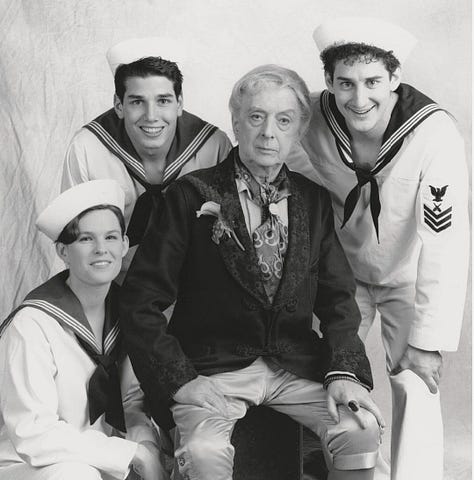
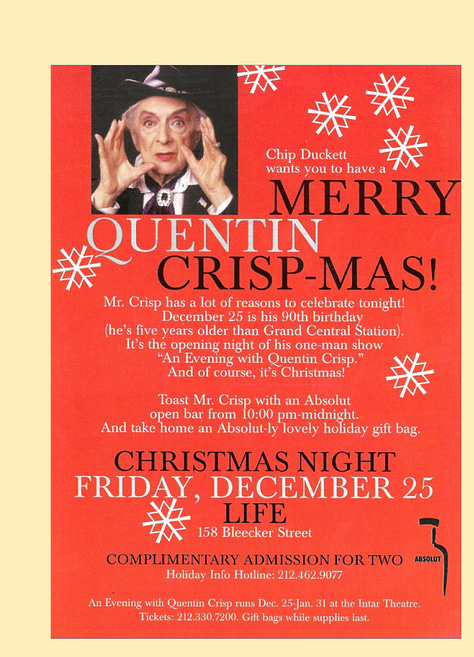
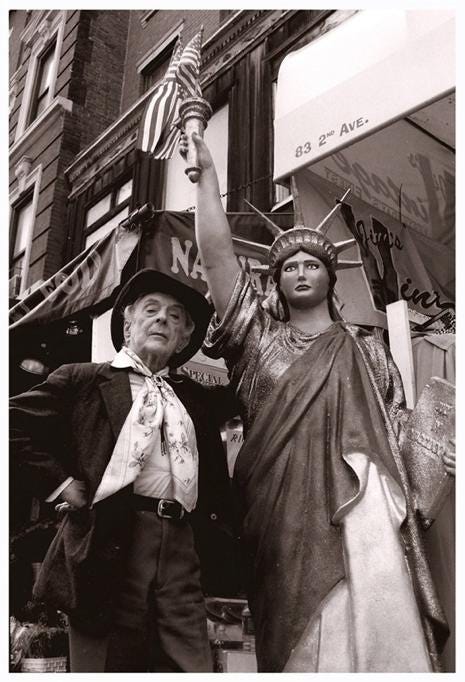

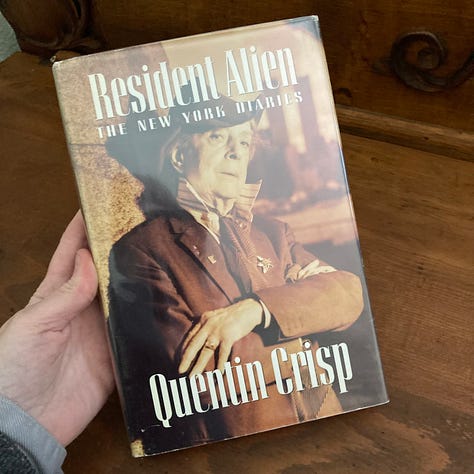

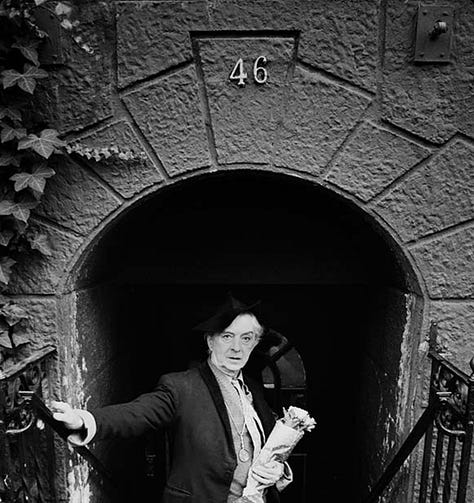







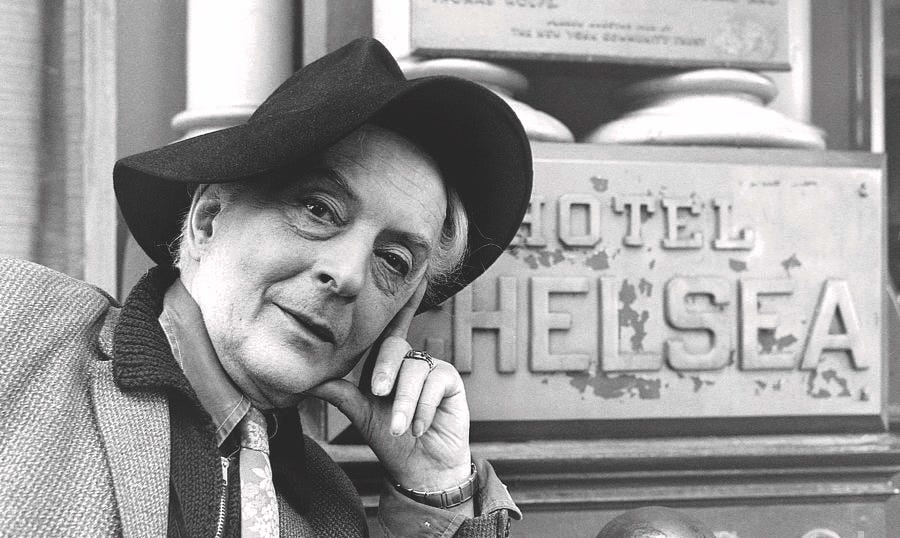
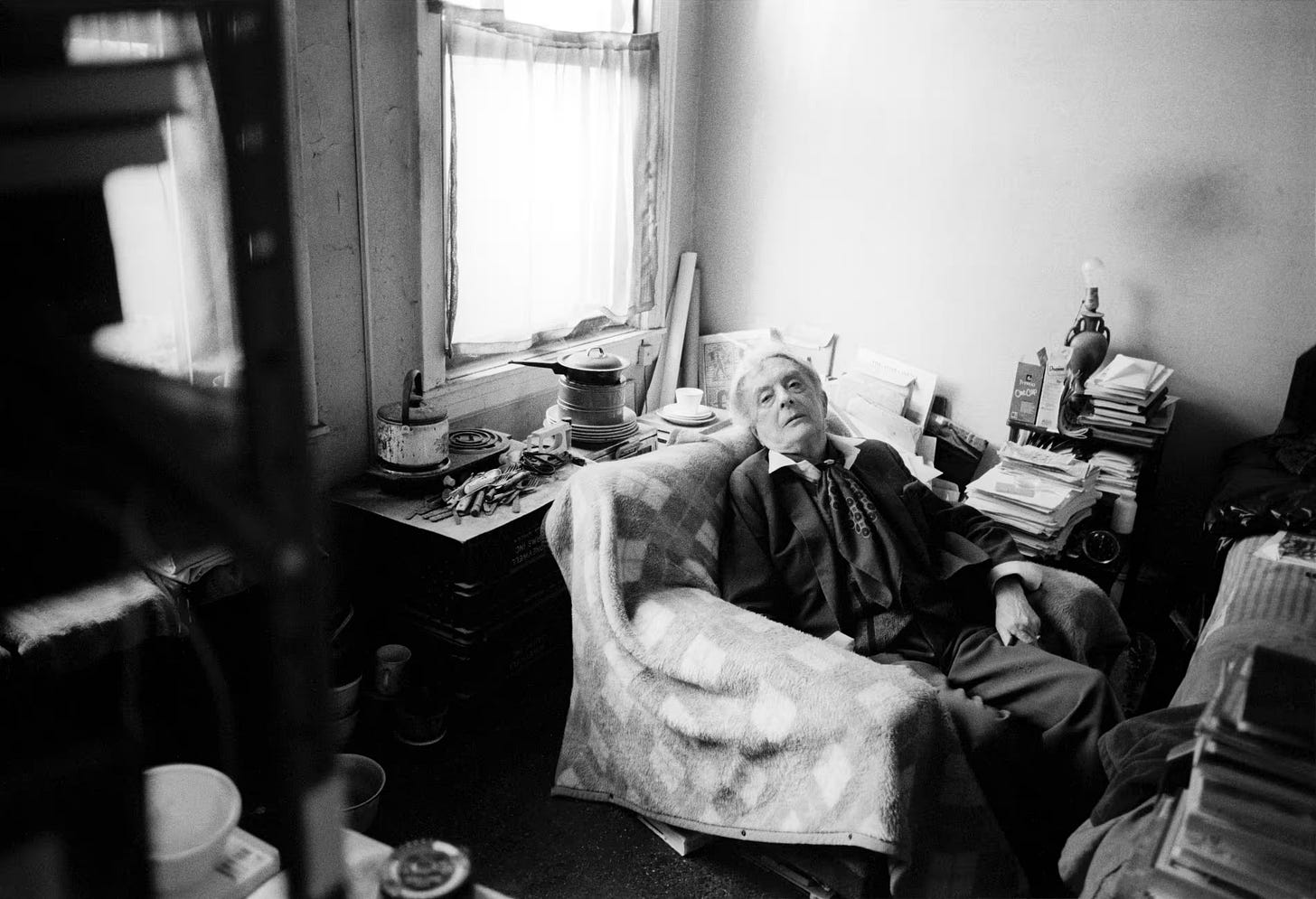
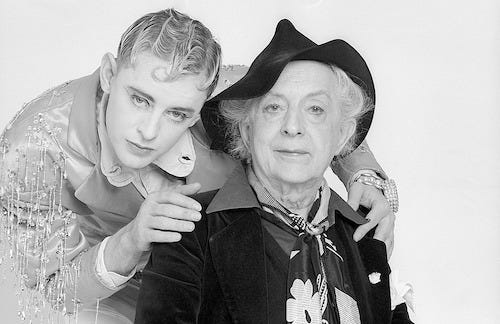


I loved Quentin. When I was in my 20s in Manhattan, they were a regular fixture in the bars, holding court. I had the pleasure on more than several occasions to sit and chat. Lovely, lovely human being. Funny and beautiful.
What a fascinating and appetite-wetting read. Thank you!